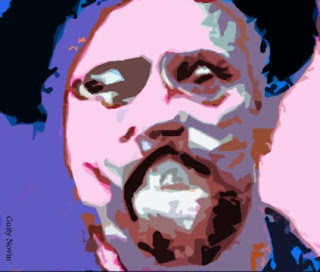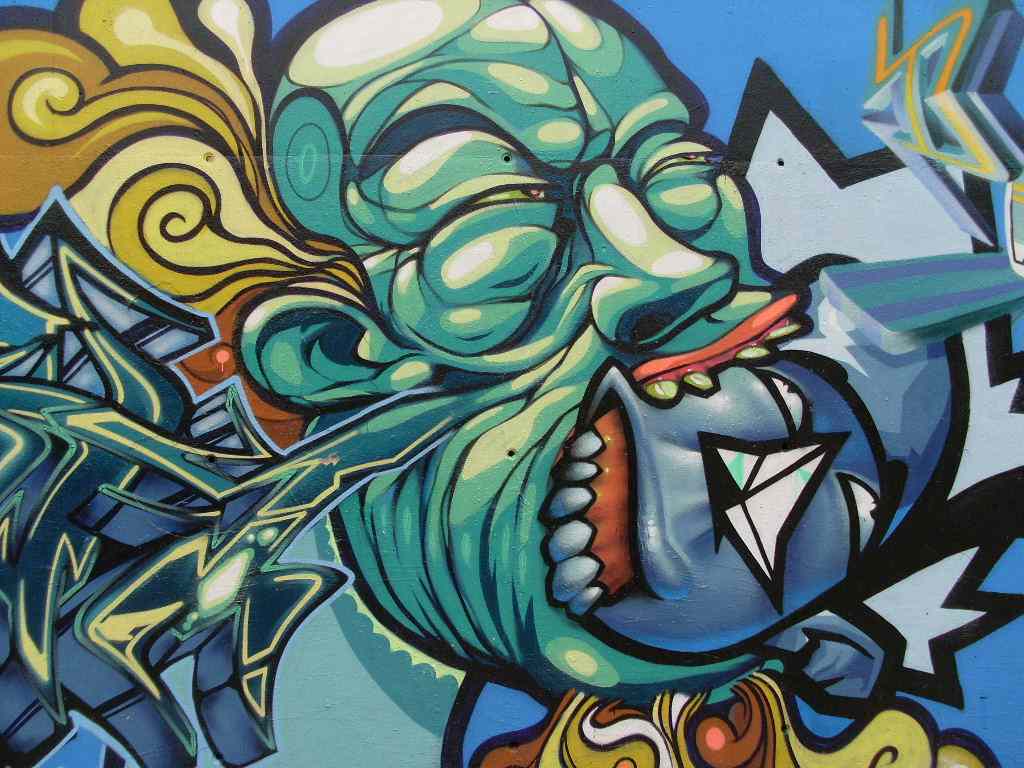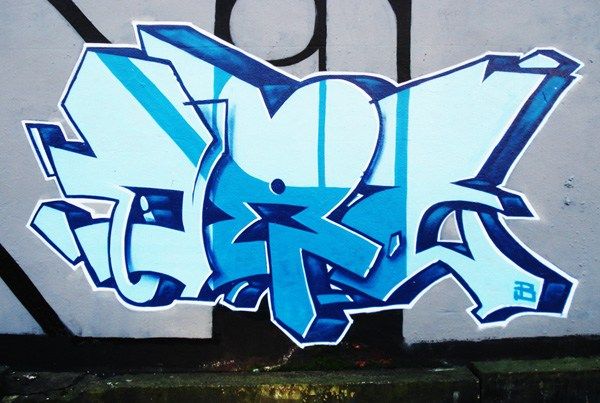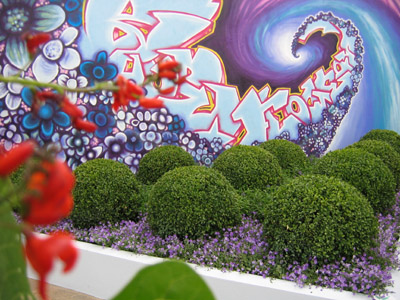----

William Morris is considered as the father of modern graphic design. Morris, an idealist and a champion of socialist causes, was an artist, designer, printer, typographer, bookbinder, craftsman, poet, and writer. His art was emotional and mythical. He loved country-garden nature and medieval ideals of chivalry as well as the romantic attachment to forests, gardens, flowers and birds. The son of a prosperous banker, Morris was born in London in 1834. At Oxford in 1853-55 he became interested in medieval life and art, was stimulated by the poetry of Mrs. Browning and Tennyson, became a friend of Burne-Jones, wrote verse and prose, and was a member of a group called 'The Brotherhood.' He believed that a designer should understand the limits and the possibilities of the media that contain his works. Consequently, he diligently applied himself to learn a wide variety of skills, and technical know-how and apprenticed himself to an architect, and at the same time also practiced several decorative arts, such as woodcarving, illuminating manuscripts, and designing furniture, stained glass and embroidery. Together with Burne-Jones he became an enthusiastic pupil of Rossetti in painting. In 1861 he established the decorative-art firm of Morris and Co., which after some years grew into a large business.
----
In the second half of 19th century his Kelmscott Press initiated a renaissance in book-design. Morris was the leader of English Arts and Crafts Movement, and became a major figure in the evolution of pattern designs, particularly on fabrics and wallpapers. His vision was to introduce artistic vision into industry and commercial design. This was important since the industrialization process of the 19th century and its aim of low-cost mass-production of goods like books , textiles and wall papers had caused a general decline in the quality of design. Books, in particular, were published on low quality paper, with shoddy presswork, and cheap inks, using dry and rigid text typefaces. In 1891, the Kelmscott Press changed this state of affairs and published high quality hand bound books. Morris founded the Kelmscott Press, named after the village near Oxford where he had lived since 1871. The firm produced high quality hand-printed books to be seen and cherished as objects d'art. Morris designed and cut the typefaces, ornamental borders and title pages which were based on the style of medieval manuscripts, while the illustrations were created by the Pre-Raphaelite artist, Edward Burne-Jones. The books were printed on handmade paper, copied from 15th century Italian samples, and bound in vellum. Although Morris looked to the past for inspiration, his aims anticipate modernist ideas on typography and layout:
'I began printing books with the hope of producing some which would have a definite claim to beauty, while at the same time they should be easy to read and should not dazzle the eye......I found I had to consider chiefly the following things: the paper, the form of the type, the relative spacing of the letters, the words, and the lines; and lastly the position of the printed matter on the page'Many of the 20th century art historians, under the spell of post modernism ideas, tried to discredit Art Nouveau as a fall-out from bourgeois taste and criticized it as a misguided artificial movement for creation of a modern style severed from its Western tradition. Of course, more recently this view has been challenged as a biased and shallow assessment based on inaccurate and misleading information. The post-modern view of the previous century ignored the sophisticated aesthetics of this style in favor of an outrage against the profit-seeking print shops, who were capitalizing on a lustrous market demand by permeating its reproductions and intense marketing to promote the works. At times a raw nationalistic feeling was the main culprit for this disdain as, for instance, French nationalist critics despised all the emerging signs of the Anglo-Saxon cultural hegemony, ironically at the same time the British elite themselves disliked the foreign influences on the Arts and Crafts movement, and largely disdained Art Nouveau as tasteless, artificial, and fleeting.
----
As a result of Burne-Jones , Morris, and Rossetti�s association, their Pre-Raphaelitism movement succeeded in its microscopic realism that influenced English painting for the rest of the 19th century. The movement gradually evolved and began to emphasize the general aesthetic ideals over their previous stylistic dogma. Burne-Jones and Morris met while while students at Exeter College, Oxford in 1853. Rossetti�s passion for literary subject matter, in particular medieval sources, distinguished the artist�s work from the modern subjects championed by his colleagues . Morris and Burne-Jones identified with Rossetti�s enthusiasm for medieval and un-modern subjects, which evoked a sense of implicit spirituality. During the summer of 1855, Morris and Burne-Jones traveled to Northern France to the study the churches. As a result of this tour, Morris decided to become an architect after completing his studies at Oxford. Burne-Jones, on the other hand, resolved to leave Oxford without a degree and dedicate himself to painting. He became apprentice to Rossetti, whose teaching curriculum stressed the idea of painting as a mode of self-expression.
In 1857, Morris, Burne-Jones and Rossetti returned to Oxford and decorated the walls of the Debating Room with ten scenes selected from Sir Thomas Malory�s Morte D� Arthur. Burne-Jones, in particular accomplished the large-scale project with incredible skill and imagination. In 1861, Morris co-founded Morris, Marshall, Faulkner & Co., nicknamed �the Firm,� which combined medieval imagery with decorative aestheticism. In the following decades, Rossetti and Burne-Jones would make contributions to Morris� design company. By the 1870s, Morris established a more business-oriented Morris & Co. geared toward the manufacturing of design items for consumption.
----
By the end of 19th century large colorful posters were a familiar feature of the main street in all the metropolises of the industrial world. The general public and particularly art connoisseurs soon recognized the artistic values of the posters. Galleries began to exhibit them, and art critics assessed their aesthetic compositions in the art journals, and there were a considerable demand for them by the art collectors . During the last few years of the Fin de si�cle period the Cheret's firm Imprimerie Chaix published the most beautiful posters of the era by more than 90 European and American artists under the heading "Les Maitres de l'Affiche" (Masters of the Poster) . This era known as 'La Belle �poque.' was characterized by the vivid colors, the visual excesses, the daring designs, the voluptuous styles, and an exaggerated concern for realistic details.
The creation of these posters, after centuries of black ink on white paper, was made possible by the invention of chromolithography in the US around 1840, which revolutionized the art of poster. Because of its low production costs, over the 50 years after the American Civil War, millions of colored lithographs were printed and sold for less than $10. Louis Prang , a Bostonian, produced fine-art subjects, such as still lifes, landscapes, and classical subjects.Nevertheless, it was only after Jules Ch�ret posters, in 1847, that the potential of this technical process for creation of artistic posters was realized.
----

As
In his old age Jules Cheret retired to the pleasant climate of the French Riviera at Nice. He died in 1932 at the age of ninety-six and was interred in the Cimeti�re Saint-Vincent in the Montmartre Quarter of Paris. He was awarded the Legion d'honneur by the French Government in 1890 for his outstanding contributions to the graphic arts. Although his paintings earned him a certain respect, it was his work creating advertising posters, taken on just to pay his bills but eventually his dedication, for which he is remembered today.
----

Swiss-born graphic artist Eug�ne Samuel Grasset was one of the leading figures in the Art Nouveau movement in Paris. Best known for his iconic posters and his contributions to graphic design�an italic typeface he created in 1898 is still used by designers around the world�Grasset also designed furniture, ceramics, tapestries, and postage stamps. In 1894, Grasset was commissioned by the French department store La Belle Jardini�re to create twelve original artworks to be used as a calendar. Grasset's delectable color wood engravings, depicting beautiful young women in seasonal costumes and gardens that change with the seasons, were issued with empty spaces for calendar dates in a fine art portfolio called Les Mois (The Months) by the Paris publisher G. de Malherbe in 1896. Grasset�s impact upon the early formation of the Art Nouveau movement had been vast and both Berthon and Mucha acknowledged him as the single greatest influence upon their art.

----

Alphonse Mucha was born in 1860 in Ivancice, Moravia, in the modern Czech Republic. He became interested in art at a very young age and when he was 27 years old he traveled to Paris and studied at the Academie Julian. However, after two years study he was out of money. He abandoned school and living above a Cremerie that catered to art students, he sold his drawings to popular magazines. After recovery from a near death illness he shared a studio with Gauguin for a short while after the Frenchman's first trip to the south seas.
On January 1, 1895, he created a poster for Sarah Bernhardt's play, Gismonda that became an overnight sensation. Bernhardt signed him to a six year contract to design her posters and sets and costumes for her plays. Because of Mucha's sensuous curves inspired by natural forms, elaborate ornamental elements and vibrant colors he was associated with the Art Nouveau style of William Morris' Arts and Crafts movement, and he became quite well known as an Art Nouveau artist. However, he denied the connection.
By 1898, he had moved to a new studio, and had his first one-man show. He begun publishing graphic arts with Champenois, a newly established print firm that was interested to promote his work with postcards and panneaux - sets of four large images around a central theme. Mucha designed the Bosnia-Hercegovina Pavilion
for World's Fair in Paris in 1900 and he began co collaboration with goldsmith Georges Fouquet crating jewelry based on his designs. He trveled to the US and did several covers and illustrations for a variety of U.S. magazines. In 1909 he began to plan out "The Slav Epic" a series of twenty massive canvasses overing the history of the Slavic people from prehistory to the nineteenth century. In 1919 the first eleven canvases were completed and exhibited in Prague, and in the US. The project was completed in 18 years and he presented it to the city of Prague in 1928. After the Germans invasion of Czechoslovakia Much was one of the first people who was arrested. He returned home after a Gestapo questioning session and died shortly thereafter on July 14, 1939.

----

Paul Berthon was a very gifted graphic designer, and a pupil of Grasset, who created some of the most elegant Art Nouveau posters of women. Although Berthon died at the age 37, he is considered one the most prominent masters of the 'La Belle �poque.' era. He studied as a painter in Villefranche before arriving at Paris in 1893. There he enrolled at the Ecole Normale d�Enseignement de Dessin, where he was taught by Luc-Oliver Merson. However it was his teacher of Decorative Arts, Eugene Grasset, who exerted the greatest artistic influence on the young Berthon.
Berthon�s early lithographs often exhibit his stylistic debt to Grasset. However, as his style matured Berthon began to experiment with the autumnal pastel palette in his Femme de Profil works that date from 1898. These warm colors together with strongly defined lines and patterns in elegant compositions were the characteristics of his mature period. The graphic design portfolio of Paul Berthon includes ninety-four original lithographs, with about sixty of his original lithographs (Femme de Profil included) are what the artist termed, �Panneaux Decoratifs� Unlike most Art Nouveau posters, these posters were meant to stand alone as significant works of art and they were not Adventist anything . These works were influenced by Berthon�s study of Japanese woodcuts and the arts of medieval France.

----

Henri Privat-Livemont was born in Brussels,Belgium. He is best known for his Art Nouveau posters. From 1883 to 1889, he worked and studied in the studios of Lemaire, Lavastre & Duvignaud. He, with Lemaire, created the decor of the Theatre Francais as well as the Hotel de Ville. He later moved back to Brussels, and worked on theaters and casinos there.

----

Two brother-in-laws, William Nicholoson (on the right) and James Pryde who were both academic painters expanded the frontiers of Art Nouveau movement in England. They worked together under the pseudo name of Beggarstaff Brothers over the 1894-1899 period, producing bold images with cut out and collage techniques that were much in demand from the new advertising culture. Their early successes in making play posters led to the Beggarstaff Brothers producing a series of woodcuts for the publishers Heinemann. Their minimalist approach using flattened and simplified surfaces, exploited the tension of colors to invite the viewers' imagination to participate in the reconstruction of the image. Their hand drawn lettering was the integral part of their powerful compositions.

Go to the next chapter; Chapter 26 - The US Pioneers of Posters
Refrences
- Baldry, A. Lys. Burne-Jones. London: T.C. & E.C. Jack, 1910.
- Barne, Rachel. The Pre-Raphaelites and their World. London: Tate Gallery Publishing Ltd., 1998.
- Bell, Malcom. Sir Edward Burne-Jones A Record and Review. London: George Bell & Sons, 1899.
- De Lisle, Fortunee. Burne-Jones. London: Methuen & Co., 1904.
- Fitzgerald, Penelope. Edward Burne � Jones A Biography. London: Michael Joseph Ltd., 1975.
- Mander, Rosalie. �Rossetti and the Oxford Murals, 1857.� Ed. Leslie Parris Pre-Raphaelite Papers. Ed. Leslie Parris. London: Tate Gallery Publications, 1984.
- Raizman, David. History of Modern Design: Graphics and Products Since the Industrial Revolution, Laurence King Publishing, 2003,ISBN 9781856693486,
- Treuherz, Julian. Pre-Raphaelite Paintings from the Manchester City Art Gallery. London: Lund Humphries, 1980.
- Watkinson, Raymond. Pre-Raphaelite Art and Design. London: Studio Vista Ltd, 1970.
- Wood, Christopher. The Pre-Raphaelites. London: Seven Dials, 1981.
- Wood, Esther. Dante Rossetti and The Pre-Raphaelite Movement. New York: Cooper Square Publishers Inc., 1973.
- Whiteley, Jon. Oxford and the Pre-Raphaelites. Oxford: Ashmolean Museum, 1989.
- "L'Art nouveau : What it is and What is thought of it. A Symposium�III," The Magazine of Art n.s. 28 (1904), 325.
- C. F. A. Voysey, op. cit., in "L'Art Nouveau : What it is and What is thought of it. A Symposium�I," The Magazine of Art n.s. 28 (1904), 212.
- Walter Crane, "Modern Decorative Art at Turin: General Impressions," The Magazine of Art 26 (1902), 488-493.
- Remy de Gourmont, "Sur l'Art Nouveau," Mercure de France ser. mod. 151.147 (Mar 1902), 699.
- Camille Mauclair, "La crise des arts d�coratifs," Revue politique et litt�raire: Revue bleue 5th ser.5.24 (16 June 1906), 755.
------------------------------------------------------------------------------------

This work is licensed under a Creative Commons Attribution-No Derivative Works 3.0 Unported License.

This work is licensed under a Creative Commons Attribution-No Derivative Works 3.0 Unported License.























